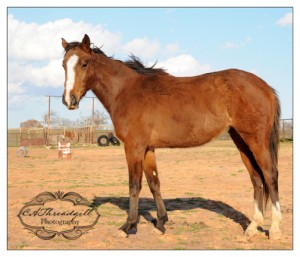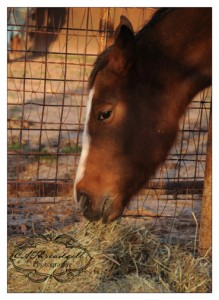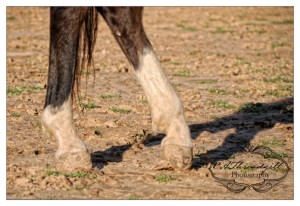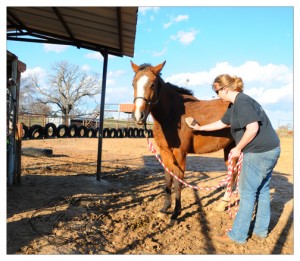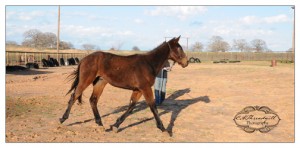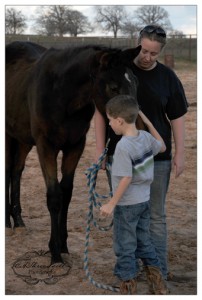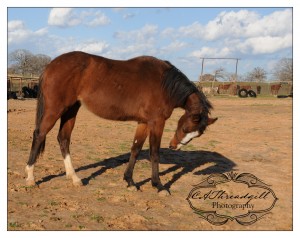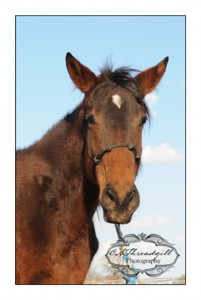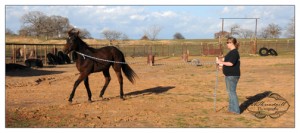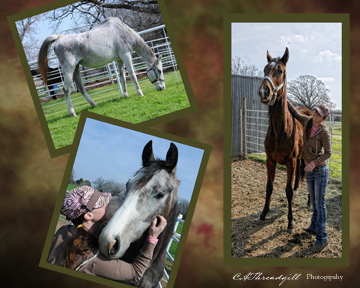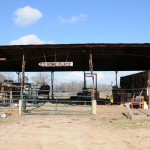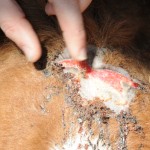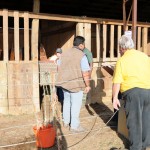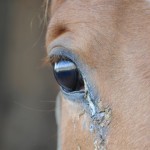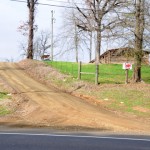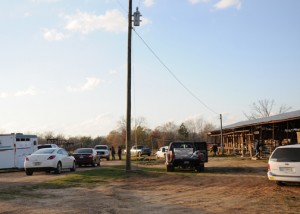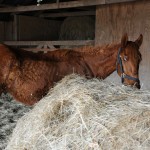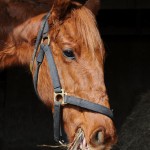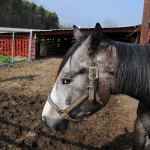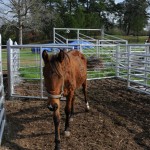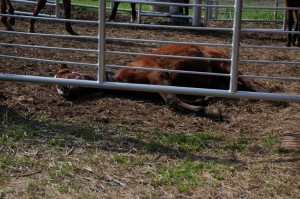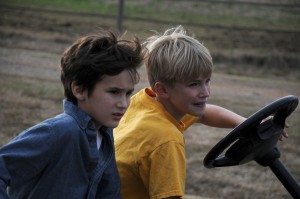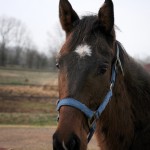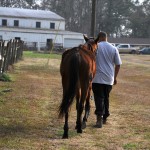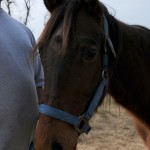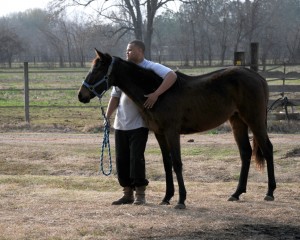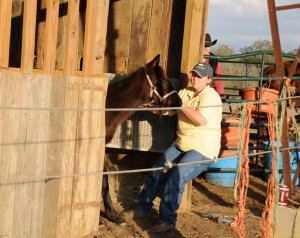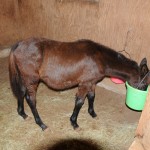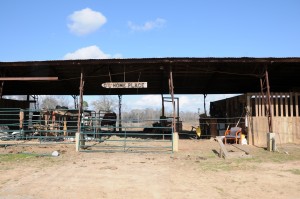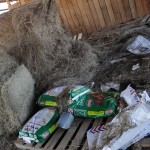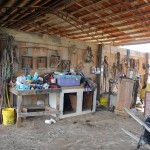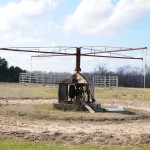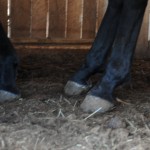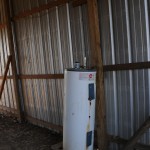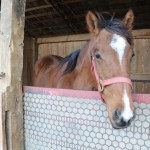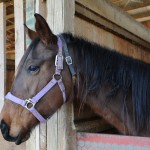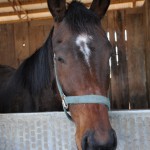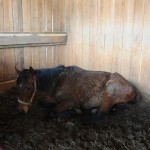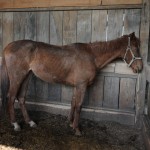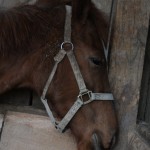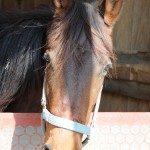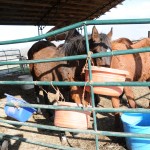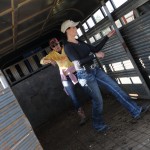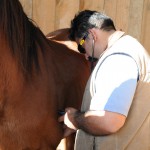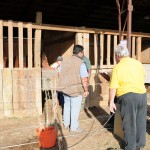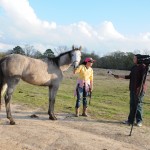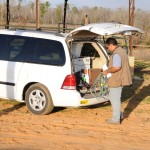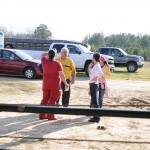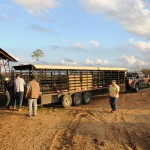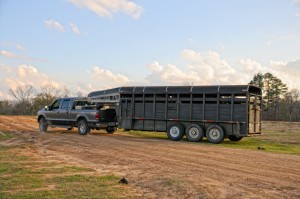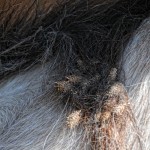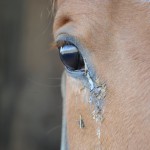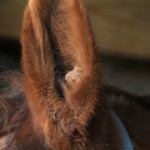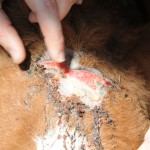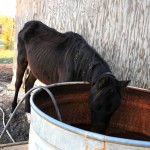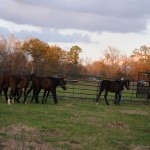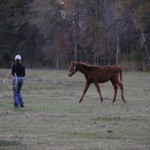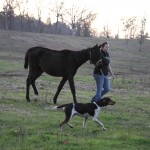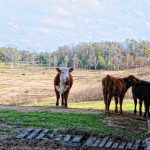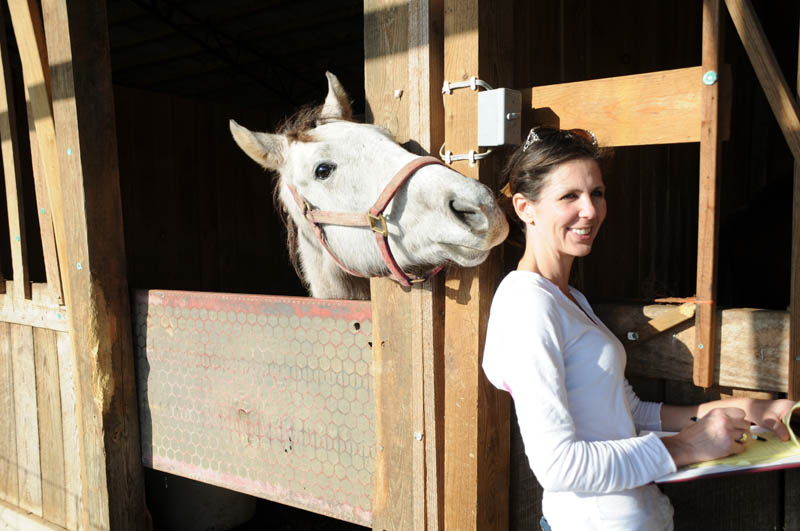RACEHORSE ABUSE IN NATCHITOCHES, LA…
There is a tragedy, ongoing, in Natchitoches, LA and there are so many people aware of the situation and nothing was being done. You see there is a farm on 1955 Williams Ave., named Ryder River Ridge Farm and a year ago, January 31, 2012, there were about 100 to 135 horses on site and there was a report of animal abuse along with pictures of dead and dying horses. Ryder River Ridge Farm was listed as the 2009 Leading Breeder on the Louisiana Thoroughbred Breeders Association web-site. The original owner Firal Ryder was a beloved man in the Louisiana Horse Community, unfortunately he is in ill health and son has taken over the operations. Unfortunately, Clay Ryder, Firal Ryder’s son is not as passionate and caring of the horses. The tragedy, I am speaking of, is that a year later, January 15, 2013, there are still dead and dying horses on this farm and no one seems to be able to get the owner/his son to allow an inspection of the property, file charges or seize the remaining horses. This farm is listed with the Louisiana Thoroughbred Breeders Association and The Jockey Club.
The Police Department in Natchitoches, LA along with Animal Control did not have the authority to take actions because the property is parish land and under the authority of the Sheriff’s Department, well all I can say is they are well aware of the situation. Are Clay Ryder, Deputy Wadsworth, and Sheriff Victor Jones friends, probably. News stations have been contacted, the District Attorney, Office of the Attorney General, and the General Criminal Division for the State of LA have all been contacted.
You may be asking what more could or can be done and in my opinion there is a lot that could and can be done in this matter and in future matters. The problem is people in authority don’t want to take any action, can’t take any action or don’t want to ruffle any feather. I am not pointing fingers at any one organization or anyone person within a specific organization, all I am trying to do is put the facts out there, as I see them.
The Board of Directors for the –
Louisiana Thoroughbred Breeders Association (LTBA), are
President: Dr. Dexter Gary; First Vice President: Michele Rodriguez; Second Vice President: Jim Montgomery
Board Member: Jay Adcock, Brett Brinkman, Charlotte Clavier, Jeff Delhomme, Jake Delhomme, Nathan Granger, Michelle LaVoice, Keith Myers, Val Murrell, Lora Pitre, and Neal McFadden
There By-Laws read in part:
Louisiana Thoroughbred Breeders Association By-Laws
Part A, Section 4
Upon filing of a written complaint about any member on the LTBA complaint form, an investigation will be performed by the LTBA, after which the member complained of shall be given reasonable notice of the complaint and an opportunity to be heard. The Board of Directors, after the hearing, upon 75% vote of the directors present, may take any action against the member deemed appropriate to protect the interests of this Association, including the sanctions of expulsion from, termination of or suspension of membership.
The first complaint that I am aware of came from an individual having direct dealings with the LTBA. I know the complaint was made and that pictures were produced in January of 2012; was this complaint written I cannot say for sure, but I do know that at least one LTBA board member received notification of this matter. These pictures were then forwarded to LHRA and then forwarded to me in an e-mail that says in part “…I’m sending you photos I was given from a farm at the following address:…It is another large scale TB breeding operation. The sheriff’s office is supposed to be investigating. I don’t get the impression they are taking it very seriously despite the other incident. Let me know if you have any ideas on how we can push this forward. I am not supposed to have the photos.”
My response was sure there are things that we can do and the phone lines lit up. Calling residences that I had meet during the Many, LA seizure was easy, with one of them telling me these were the horses that she was talking about two weeks ago. I was able to get the phone numbers and names for the Animal Control and the Police Department, both of whom informed me that they were aware of the situation but their hands were tied because the property was considered to be in the parish not in the city limits. The Sheriff’s Department never returned any of the calls I made a year ago. Along with making the telephone calls and contacts we worked on getting together a list of horses that should be on the property, along with markings and numbers. We also began talking about preparing a database of local farms that may be able to help out by taking one or more of the horses. We were preparing for a seizure twice the size of the one that had just occurred in Many, LA and we wanted to be ready.
For weeks there were calls made regarding these horses and there were even a couple of meetings held and there was information being put together to present to news media and to post on websites and social media sites. It was finally “agreed” with the assistance of the Sheriff’s Department (and I say that lightly) that the owner would turn over approximately 20 horses over a three day period and LHRA ask those of us working on resolving this matter to stop what we were working on since the “owner is working with us”. So everyone involved backed off, I had a couple of follow up conversations with LHRA where I was told that if the owner did not continue to work with them they would call me and then my calls stopped being returned. I figured that with all of the horses from the Many Rescue and now these horses, they were busy so I didn’t do any further follow up, truly believing that if the problem continued I would again be contacted.
It is now being reported that the owner did not turn over all the horses he promised to originally turn over and that the Sheriff’s Department continues to ignore the reports of abuse and neglect at this property.
Louisiana Revised Statutes. Title 14. Criminal Law. Chapter 1. Criminal Code. Part VI. Offenses Affecting The Public Generally. Subpart B. Offenses Affecting The Public Sensibility. § 102. Definitions; cruelty to animals states in part:
§ 102. Definitions; cruelty to animals
The following words, phrases, and terms as used in R.S. 14:102.1 through R.S. 14:102.4 shall be defined and construed as follows:
(1) “Cruel” means every act or failure to act whereby unjustifiable physical pain or suffering is caused or permitted.
(2) “Abandons” means to completely forsake and desert an animal previously under the custody or possession of a person without making reasonable arrangements for its proper care, sustenance, and shelter.
(3) “Proper food” means providing each animal with daily food of sufficient quality and quantity to prevent unnecessary or unjustifiable suffering by the animal.
(4) “Proper water” means providing each animal with daily water of sufficient quality and quantity to prevent unnecessary or unjustifiable suffering by the animal.
(5) “Proper shelter” means providing each animal with adequate shelter from the elements as required to prevent unnecessary or unjustifiable suffering by the animal.
(6) “Proper veterinary care” means providing each animal with veterinary care sufficient to prevent unnecessary or unjustifiable physical pain or suffering by the animal.
(7) “Livestock” means cattle, sheep, swine, goats, horses, mules, burros, asses, other livestock of all ages, farm-raised cervidae species, and farm-raised ratite species.
Why hasn’t the Sheriff’s Department done their job? He has been provided with pictures and he has been on the property! Is he not aware of the laws of his own state? We know for a fact that 26 of the 100 horses on this property a year ago have suffered cruel treatment, did not receive proper food, water or veterinary care and that they are horses, that is a minimum of 26 counts.
Further, Louisiana Thoroughbred Breeders Association, By-Laws state in part:
Part C, Section 1
(A) Foal Accreditation: In order to have a foal accredited as a Louisiana Bred Horse, the following requirements shall be fulfilled. The foal must be born in the State of Louisiana.
1. The foal’s dam must be domiciled in the State of Louisiana and meet the appropriate residency requirements based on her designation as an imported, a resident, sale, departing, in-foal, or barren mare. All mares entering the program must be registered with the LTBA upon entry into the State of Louisiana and upon each transfer of ownership thereafter. As set forth by the LTBA rules, failure to register a mare and her domicile in a timely manner shall result in penalties and/or in the mare’s foals being denied the status of an Accredited Louisiana Bred. All mares are subject to inspection at any time.
and a letter on their web-site states in part:
LETTER ON Louisiana Thoroughbred Breeders Association WEBSITE:
March 10, 2009
Dear Member,
At the recent Board of Directors Meeting the board voted on and passed a number of adjustments to the way mares are inspected as well as amendments to forms and fees. Listed below you will find guidelines of when a mare may be inspected, as well as a list of required forms and fees associated with the failure to complete and file the required forms.
Guidelines of when a mare may be inspected:
1. New mares; within 30 days of form being filed with the office.
2. Mares going out of state to breed with foals at their side; before leaving and after the August 1st deadline of returning.
3. Mares without foals; on their return or after August 1st.
4. Anytime there is a Change of Domicile of the Mare.
5. Mares with early breeding dates may be inspected during the last three weeks of December.
6. Complaints received on a case by case basis.
We know that these mares are being inspected on a regular basis, for domicile purposes, but unless the inspector is blind, and in this matter he was not, the Louisiana Thoroughbred Breeders Association is aware of the abuse and yet they continue to register horses from this farm and list this farm in their directory.
Is there more that could have been done, yes. There is the Louisiana Racing Commission. Some of the horses owned by this farm are still racing. If the Louisiana Thoroughbred Breeders Association had reported their findings to the Louisiana Racing Commission the trainers licenses could have and should have been revoked and the horses would not have been allowed to race. The Louisiana Racing Commission’s web-site states in part:
Louisiana Racing Commission
The Louisiana State Racing Commission was created by legislative act in 1940. The Commission is composed of thirteen members, one representing each Congressional district plus 2 at-large and 4 representing each of the parishes where live racing is held. All are appointed by the Governor, subject to State Senate confirmation.
The official domicile of the Commission is in New Orleans, and its’ office is currently located at 320 North Carrollton Avenue, Suite 2-B, 70119-5100.
The Racing Commission’s legal mandate is the forceful and honest statewide control of horse racing for the public health, safety, and welfare by safeguarding the citizens of Louisiana against corrupt, incompetent, dishonest and unprincipled horse racing practices.
Some of the ways the Racing Commission accomplishes its’ legal mandate is by assuring the public and horsemen of Louisiana that:
1. each racing association conducting a race meeting is licensed and operated by responsible management, and does its utmost to provide the patrons, horses and horsemen the best possible facilities it can afford;
2. the wagering management, clerks and equipment inspire patron confidence in the betting system;
3. every owner and trainer seeking to enter a horse in competition is licensed, is a person of good character and is financially responsible;
4. every horse appearing in a race is the animal it is represented to be on the program, is carrying the correct weight as assigned by the track handicapper, and is physically fit and able to participate in a race;
5. every race run represents a true competitive effort by every participating horse and rider;
6. during the running of any race no rider commits any act that would unfairly tend to make the race anything other than a true competitive test;
7. no one responsible for the custody of a competing horse has administered, or allowed to be administered, any prescribed medication to it within a specified time prior to the race; nor administered, or allowed to be administered, any illegal substance to it at any time;
8. no one who may be able to affect the outcome of a race is under the influence of any illegal substance or alcohol.
If the LTBA had notified the Louisiana Racing Commission they would have had an opportunity to more closely examine the animals coming from this farm and possibly pulled the trainer’s license then the Louisiana Thoroughbred Breeders Association could have terminated the Farms membership.
Part A, Section 8
Any member who is (1) convicted of a criminal offense which would be a felony under the laws of the United States of America or of the State of Louisiana and is not pardoned or has not completed probation or parole supervision, (2) convicted of a criminal offense which would be a misdemeanor under the laws of the State of Louisiana, which offense is related to the sport of racing or to the business of breeding, and is not pardoned or has not completed probation or parole supervision or (3) under a final order of the Louisiana State Racing Commission suspending or terminating any racing privilege or right in this State, the Board of Directors may terminate the membership of a member of this association by a 2/3 majority vote of the Board of Directors. Upon such termination, the member of this Association shall not have initiation or application fees returned or dues returned.
I am also aware that the Jockey Club could have gotten involved since they are in charge of the pre-race inspection. Their web-site states in part:
|
Welcome to The Jockey Club!
|
The Jockey Club is the breed Registry for Thoroughbred horses in the
United States, Canada and Puerto Rico. The organization is dedicated to the improvement of Thoroughbred breeding and racing, and it fulfills that mandate by serving many segments of the industry through its subsidiary companies and by providing support to a wide range of industry initiatives. |
|
THE JOCKEY CLUB
THOROUGHBRED SAFETY COMMITTEE
RECOMMENDATIONS
AUGUST 22, 2010
Recommendation: Pre-Race Inspections
InCompass Solutions Inc. has developed a Pre-Race Veterinary Exam module offered through its Race Track Operations (RTO) system. The software enables regulatory veterinarians at racetracks to record the details of racehorses’ pre-race soundness inspections in a secure central database, and it is provided as a free service to any jurisdiction that agrees to share its pre-race exam data with association and regulatory veterinarians at other tracks that are using the system.
Sharing the results of pre-race inspections among regulatory veterinarians provides valuable insight into soundness issues that may require closer evaluation. As horses increasingly move among racetracks for competition, the regulatory veterinarians charged with evaluating racing soundness of our equine athletes can review the confidential results recorded by colleagues and obtain a more complete picture of racing soundness.
The Thoroughbred Safety Committee calls for
“The immediate use of the pre-race veterinary examination module and the sharing of inspection information by all racing jurisdictions, regulatory veterinarians and racetracks performing pre-race inspections.”
The system contains the following features to aid in the pre-race inspections:
• previous inspections are stored and saved for an inspection “past performance”
• previous inspections, past performances, and entry and program data are automatically loaded for each horse and race
• centralized location of information related to the inspections of a horse is accessible only through a secure log in and user ID for regulatory veterinarians
Further, the Thoroughbred Safety Committee calls for
• The transparency and reciprocity of all associated “lists” kept by various racing officials. The RTO system provides a mechanism for racing officials to share the following lists at no cost to the commission or racing association.
o Vets
o Bleeder
o Nerve
o Starter
o Paddock judge o Deceased
o Problem
o Ineligible
o Stewards
o Claiming
The Thoroughbred Safety Committee believes that any insights about the particular traits, behaviors and histories of racehorses that can be gained through sharing of lists among racing associations are invaluable to the health and safety of the horse, rider and all personnel involved with the handling and care of a Thoroughbred before, during and after the running of a race.
I have also been made aware of the fact that on or about May 10, 2012 the Stewards at Delta Downs fined Trainer, F.C. Ryder, the sum of $100 for failure to have Piroplasmosis test for his scheduled starter, Cee Ya Sunday.
Is there more that could have been done, I believe the answer is yes. The Louisiana Horse Rescue Association who’s board members are:
Louisiana Horse Rescue Association (LHRA)
President: Patrick Richmond
Board Members: Michelle Rodriguez, Theresa Arroyo, Jason Boulet, Dr. Mustajab Mirza, Judy Agular, Sandra Salmen,
Executive Director: Sunny Francois
could have reignited the fire a lot sooner. Those of us who knew about this matter last year were told in March of 2012 that it appeared the owner was going to work with LHRA and would be delivering 20 horses within the next week and that we would be contacted if the agreements were not followed through with, but for now we could stand down and give the owner an opportunity. Well here we are in January of 2013 and we are finding out that less than half of the original 20 horses that were committed to be turned over were actually turned over and the death and dying has continued.
If you look at the connection between the Louisiana Thoroughbred Breeders Association and the Louisiana Horse Rescue Association it is so muddled that they appear to be one in the same organization. Both organizations use the same post office box and the same bookkeeper, LHRA Board Member Michelle Rodriguez is First Vice President of the Louisiana Thoroughbred Breeders Association, LHRA Board Member Theresa Arroyo is the LTBA’s bookkeeper, LHRA Board Member Jason Boulet works for the fairgrounds, LTBA helps LHRA out financially, and the Executive Director of the LHRA is on the payroll of the LTBA as a IT Consultant.
Earlier this week (January 15, 2013) I saw a post on Facebook from a friend regarding this farm and the death and carnage and at that time was made aware that the situation had not gotten better, the owner was not working with LHRA and the Sheriff’s Department had yet to do a formal investigation and to report what was known by so many. After a number of individuals (mostly friends of RMR) making an untold number of phone calls, hundreds of posts on Facebook, Remember Me Rescue (out of Burelson, TX) renting a helicopter to photograph the carnage and finally contacting the Louisiana State Police access to this property was gained.
Between January 15, 2013 and January 19, 2013 LHRA made many posts to the Facebook pages, for the most part thanking people for their donations (in excess of $2,700 and $1,200 in supplements), yet few if any posts were made as to what steps people could take to rectify this matter. There was a Facebook post which states “We hope that the organizations who have assisted in bringing this situation to a head will also be available to assist in the efforts to provide transport/homes/medical care and financial resources to the horses.”
On January 15, 2013, I made a post regarding this matter and LHRA made facebook posts and comments regarding that blog post which in part states … 3. LHRA has never had joint meetings with anyone regarding the horses in Natchitoches. We have had conversations with authorities on occasion, trying to push for investigation and seizure. We have accepted horses from the breeder as he surrendered them. We were successful in obtaining 26 horses this year.
Sunny Francois, Executive Director of LHRA admits in an e-mail dated January 19, 2013 (7:19 PM) “…Of the original 20 promised 8 were received; after which point the spring grass was coming up…” Well excuse me for calling foul but spring grass does not come up overnight especially when you have 100 horses grazing. Further stated in this e-mail Ms. Francois states “that we have had the state vet visit the property three times, that we have had the Sherif’s Office to the property, that we have had the Brand Commission to the property and all have cleared it. As a secondary measure we began to work with the farm owner…”. Ms. Francois further states in this same e-mail “We’ve now taken 47 horses off the property, more than anyone sitting at home complaining about the situation has done.” Of those 47, eight were received in February of 2012, eighteen were received around January 5, 2013, an additional seven were surrendered on Thursday the 17th and fourteen were received on the 19th , so 21of the 47 horses were received after the Facebook post that reignited the fuse and after those “sitting at home complaining” started complaining. Those of us “sitting at home complaining” would have been there in a heartbeat if we had been ask at any time during the past twelve months.
LHRA further posted on Facebook on January 19, 2013 “ … We will try to put something on our website in the next day or two giving the full story. At this point we understand that the elderly gentleman who started the farm took wonderful care of it and the horses. He is now in a nursing home and his son has taken over, and the farm is in the condition we see. That really is about all we know. Horses that the founder bred are still racing and winning currently.” Further Patrick Richmond posted on LHRA Facebook Page “ LHRA is having all of the new rescues, including the 14 that just arrived vetted at Richmond Plantation on Monday, thanks to Jessica Duncan and a team of vet students from LSU School of Veterinary Medicine. … We will also be hosting the local news, State Police and the Livestock Brand Commission.”
On January 21, 2013 at approximately 6:45 PM one of LHRA’s Facebook Friends posted the following on their Facebook Page:
I understand there will be a press conference this afternoon re: Ryder horses. Please be certain to tell them why no follow up was done at this farm, why nobody bothered to walk the property. And most of all, please give all the credit to Remember Me Rescue out of Texas. If it were not for them all these horses would have died and nobody would be the wiser.
This is the response from LHRA:
Louisiana Horse Rescue Association Catherine, apparently you don’t understand anything. If you don’t have permission to “walk someone’s property” it is called tresspassing. If you take horses without permission it is called theft. The 38 horses LHRA saved were voluntarily turned over long before any other rescue saw a chance to make a buck slipping away and started trying to generate funds for themselves. LONG BEFORE. How many Ryder horses has LHRA rescued?? 51!!!!! How many has any other mouth-flapping rescue taken in – NONE, a big fat 0. So get off our back, we work within the law, we aren’t the animal police, and the ONLY thing we are interested in is the welfare of the horse. Instead of wasting time on facebook, why don’t you actually do something that helps a horse, like asking your congressman for better laws on this. Please unlike our page, it will save you lots of time.
They further went on to say:
All of the horses we have were turned over to us before anyone “jumped in a helicopter”. Explain your other rescue begging for donations for these horses when they have not rescued a single one – I’ll go check the mailbox, but I think I know what I’ll find from them. I call that fraud. We work really hard to do what we do, we have been in constant contact with the local authorities – the law – to little, but some, avail. Is it an ideal situation – no, not at all. Perhaps if you knew what we have been up against you would be less critical and actually try to help us.
Is this really how the Horse Racing Industry in Louisiana wants to be known? Some of us sitting around complaining were trying to help a bad situation from getting worse and we were there last year and were sent away. I personally have shed many tears this past week, because I was one of the few who had the proof a year ago, I knew who took the pictures, I knew who knew and I trusted. I am sorry for every horse that has died during the past year on that farm. I am Sorry.
I would like to personally thank everyone who helped out this past week making telephone calls, obtaining telephone numbers and e-mail addresses, for your support and encouragement, and for passing on this information to make sure that we could save as many of these horses as possible. Special thanks to Donna and Dallas Keen and Remember Me Rescue for renting the helicopter and photographer and Vicki Morgan for keeping us updated.
The question remains, why was this tragedy allowed to go on for as long as it did? There were so many people who knew what was going on and resources available where this type of behavior should have been stopped a year ago, starting with Sheriff Victor Jones. Last year we had the Many, LA issue and this year we have the Natchitoches, LA issue. What is wrong with this picture? Who dropped the ball first? The problem is that Louisiana may not be the only state that has these types of issues when it comes to abuse of horses and other animals.

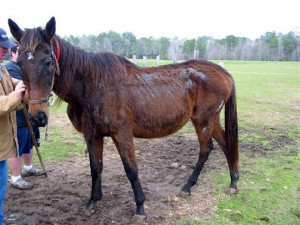
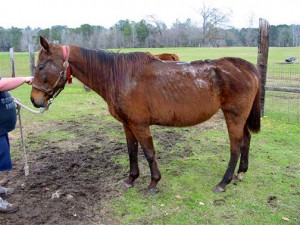
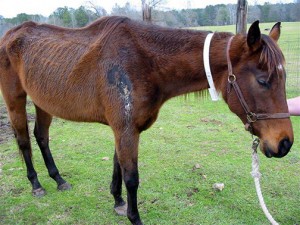
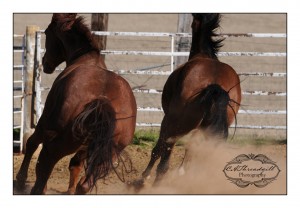
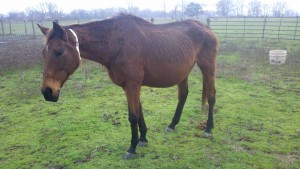
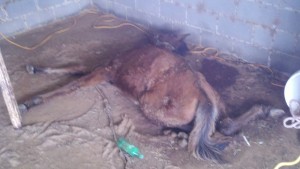
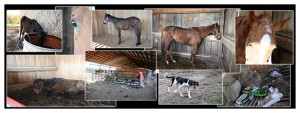

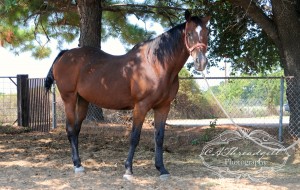
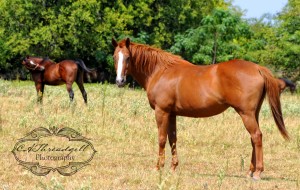
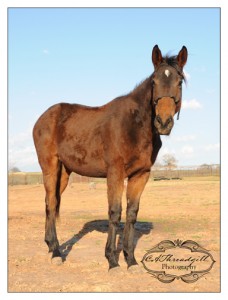 It is hard to write this follow-up because it turned out that this was not the isolated incident I thought it was, but it was the first one where I was on the scene. During the past twelve months I have learned so much about the Race Horse Industry, and yes it is an industry. I have received a number of calls and e-mails regarding other race horses being neglected and found that it is almost impossible for individuals or rescue groups to take action. If the owner doesn’t relinquish the horses voluntarily then there must be such a public outcry before anything gets done. I have received pictures of dead and dying horses, have called police departments, sheriff departments, neighboring farms all the time giving the owner the opportunity to remove evidence of abuse and neglect. There are inspectors and horse racing officials who know about these incidences but the abuse continues.
It is hard to write this follow-up because it turned out that this was not the isolated incident I thought it was, but it was the first one where I was on the scene. During the past twelve months I have learned so much about the Race Horse Industry, and yes it is an industry. I have received a number of calls and e-mails regarding other race horses being neglected and found that it is almost impossible for individuals or rescue groups to take action. If the owner doesn’t relinquish the horses voluntarily then there must be such a public outcry before anything gets done. I have received pictures of dead and dying horses, have called police departments, sheriff departments, neighboring farms all the time giving the owner the opportunity to remove evidence of abuse and neglect. There are inspectors and horse racing officials who know about these incidences but the abuse continues.